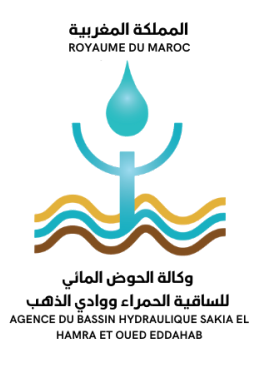- Home
- Agency
- Missions
- Evaluation and Monitoring of Water Resources
- Planning and Management of Water Resources
- Granting of Authorizations and Concessions
- Prevention And Protection Against Floods.
- Review of Projects Impacting Water Resources
- Financial and Technical Assistance
- Research and Development
- Integrated Water Management and Control of Water Use
- Services
- E-ABHSHOD
- Webmail Access
- Platform MAA DIALNA
- Tenders ABHSHOD
- Public Procurement Portal
- FAOLEX Database
- Platform of the Ministry of Equipment and Water
- Platform AJAL
- Platform ROKHAS
- Platform MAJALISS
- Transparency Portal
- National Claims Portal
- National portal of citizen participation
- Electronic administrative document control terminal
- Media Library
- Blog
- English
Integrated Water Resources Management and Control of Their Use:
This mission reflects the importance of adopting a comprehensive approach to manage water resources sustainably and efficiently. Here is a detailed expansion of this mission:
- Strategic Planning:
- The Agency develops a strategic plan for the integrated management of water resources in its area of operation. This planning considers hydrological, environmental, economic, and social aspects to ensure a holistic and balanced approach.
- Inventory of Water Resources:
- The initial step involves conducting a comprehensive inventory of available water resources. This includes assessing river flows, quantifying groundwater reserves, and identifying wetland areas.
- Analysis of Demands and Uses:
- The Agency analyzes various water demands and uses in the region, whether for agriculture, industry, drinking water supply, or other needs. This analysis helps understand pressures on water resources and adjust management accordingly.
- Development of Management Plans:
- Based on the inventory and demand analysis, the Agency develops integrated water resources management plans. These plans aim to balance competing needs while preserving the ecological balance of aquatic ecosystems.
- Flow Regulation:
- The Agency regulates river flows and water withdrawals to ensure fair and sustainable resource use. This may involve implementing control mechanisms, defining usage quotas, and coordinating with water users.
- Protection of Sensitive Areas:
- Wetlands, groundwater recharge areas, and other sensitive zones are identified and protected. Specific measures are implemented to prevent overexploitation of these areas and preserve their ecological role.
- Promotion of Water-Efficient Practices:
- The Agency promotes water-efficient practices among users. This can include adopting efficient technologies, raising awareness of good agricultural and industrial practices, and implementing incentives for responsible water use.
- Water Quality Monitoring:
- In addition to quantity, the Agency monitors water quality in the region. This includes analyzing physical, chemical, and biological parameters to ensure water safety and prevent pollution.
- Management of Extreme Events:
- The Agency develops management plans to address extreme events such as droughts or floods. These plans aim to minimize impacts on water resources and ensure increased resilience to climate change.
- Coordination with Local Stakeholders:
- Integrated water resources management involves close coordination with local authorities, communities, farmers, industries, and other stakeholders. Effective collaboration promotes a concerted and adaptive approach to water management.
- Education and Awareness:
- The Agency implements education and awareness programs to inform the local population about the importance of integrated water management and encourage active community participation in resource preservation.
- Use of Advanced Technologies:
- The Agency explores the use of advanced technologies, such as Geographic Information Systems (GIS) and smart sensors, for real-time monitoring and efficient management of water resources.
In summary, the mission of “Integrated Management and Control of Water Use” by the Hydraulic Basin Agency of Sakia El Hamra and Oued Eddahab aims to ensure sustainable and balanced use of water resources by integrating ecological, social, and economic dimensions into decision-making and long-term planning.

